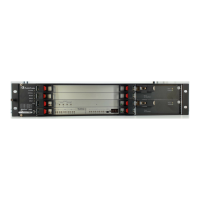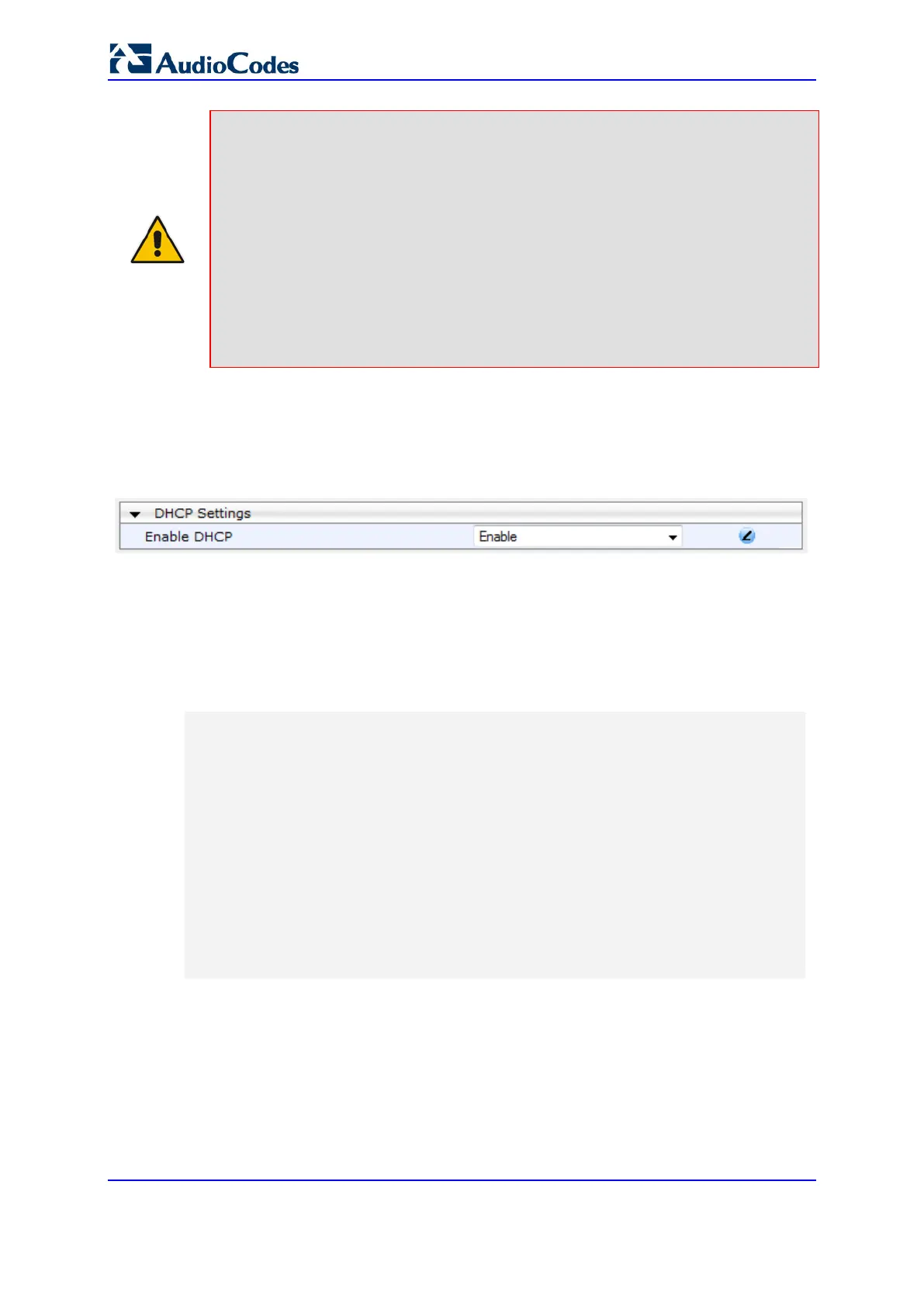User's Manual 712 Document #: LTRT-89730
Mediant 3000
Notes:
• Throughout the DHCP procedure, make sure that the BootP/TFTP program
(AcBootP utility) is deactivated; otherwise the device receives a response from the
BootP server instead of the DHCP server. Typically, after the device powers up, it
attempts to communicate with a BootP server. If a BootP server does not respond
and DHCP is enabled, the device attempts to obtain its networking parameters
from the DHCP server.
• When using DHCP to acquire an IP address, the Interface table, VLANs and other
advanced configuration options are disabled.
• For more information on DHCP, see BootP Request and DHCP Discovery upon
Device Initialization on page 709.
• For additional DHCP parameters, see ''DHCP Parameters'' on page 854.
To enable the device as a DHCP client:
1. Open the Application Settings page (Configuration tab > System menu >
Application Settings).
Figure 46-2: Enabling DHCP - Application Settings Page
2. From the 'Enable DHCP" drop-down list, select Enable.
3. Click Submit.
4. To activate the DHCP process, reset the device.
The following shows an example of a configuration file for a Linux DHCP server
(dhcpd.conf). The devices are allocated temporary IP addresses in the range 10.31.4.53 to
10.31.4.75. TFTP is assumed to be on the same computer as the DHCP server
(alternatively, the "next-server" directive may be used).
ddns-update-style ad-hoc;
default-lease-time 60;
max-lease-time 60;
class "gateways" {
match if(substring(hardware, 1, 3) = 00:90:8f);
}
subnet 10.31.0.0 netmask 255.255.0.0 {
pool {
allow members of "audiocodes";
range 10.31.4.53 10.31.4.75;
filename "SIP_F6.60A.217.003.cmp –fb;device.ini";
option routers 10.31.0.1;
option subnet-mask 255.255.0.0;
}
}

